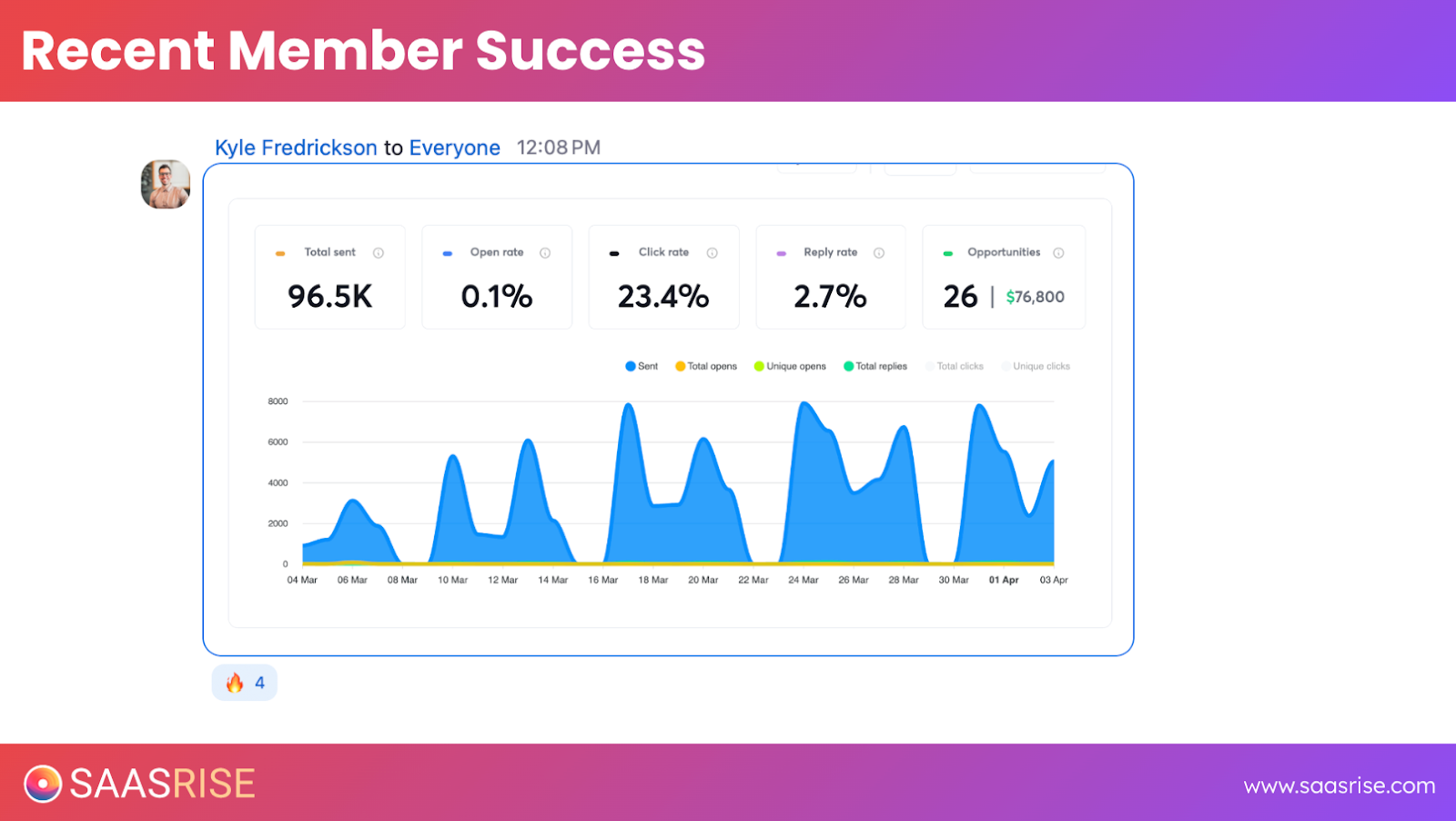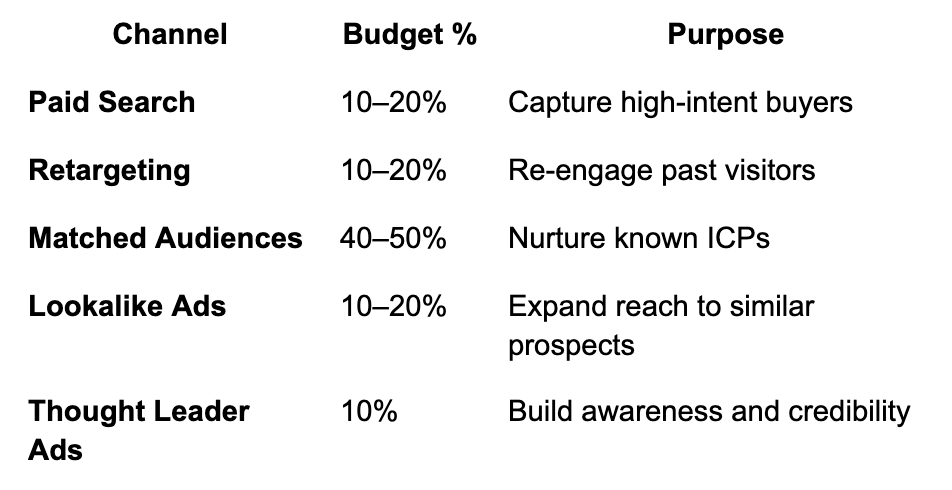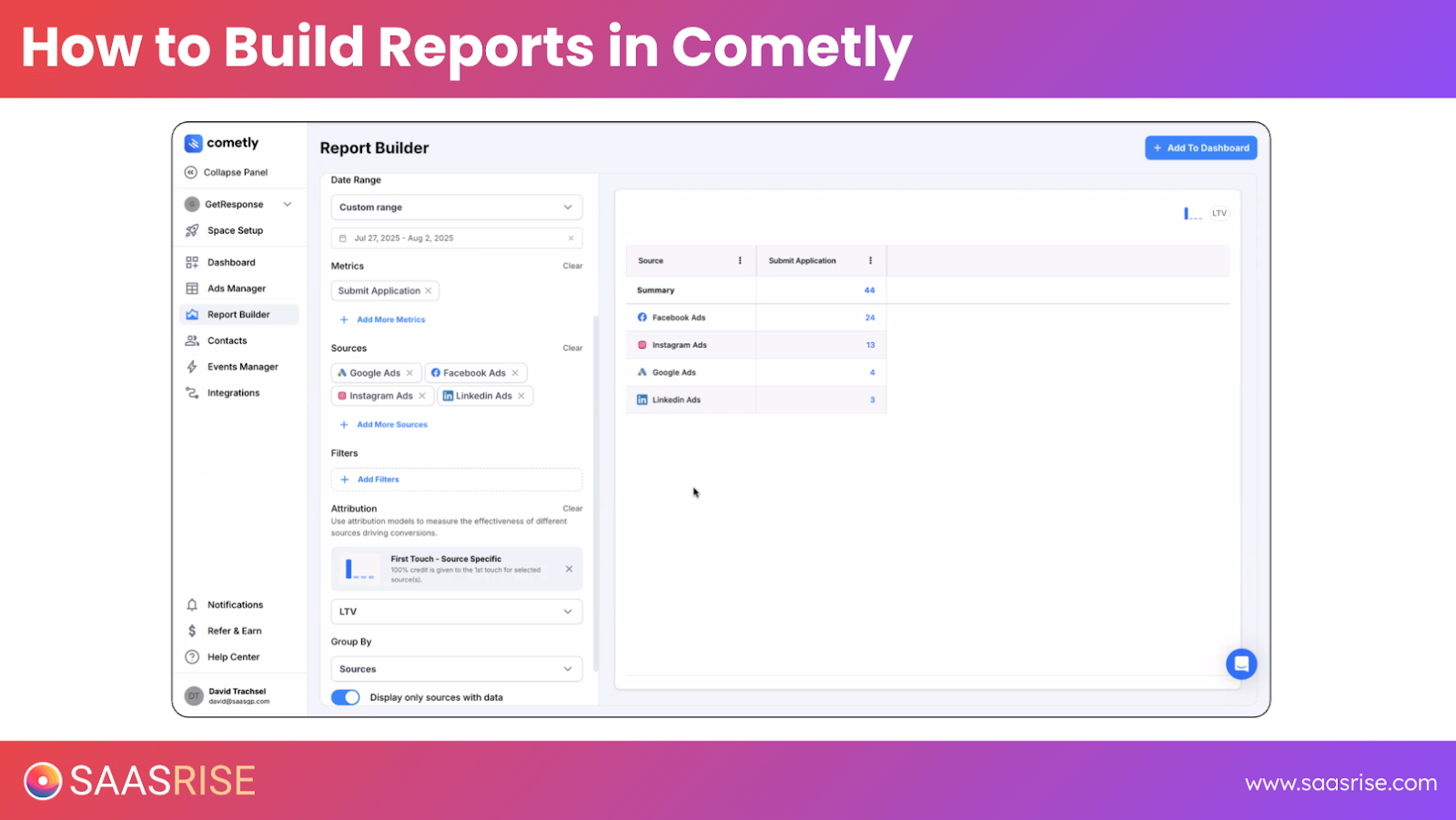
How to Use Paid Search and LinkedIn Thought Leader Ads to Drive B2B SaaS Growth
Learn how to capture high-intent buyers through Google and Bing search campaigns while building brand authority with LinkedIn Thought Leader Ads. This session covers keyword strategy, bidding, creative setup, and founder-led content that turns awareness into inbound pipeline.
When it comes to scaling SaaS, not all ads are created equal.
Some build awareness. Some capture demand. The real magic happens when you use both — systematically.
Paid search and thought leader ads are the perfect pair. Paid search captures prospects who are ready to buy. Thought leader ads build awareness and authority among those who aren’t there yet.
Together, they turn your marketing from reactive to predictable.
Let’s break down how to use both effectively — from structuring Google and Bing search campaigns to launching LinkedIn thought leader ads that actually build credibility and generate pipeline.
This content is from the 16 week B2B SaaS Growth Program that we run twice a year.
Why Paid Search Still Matters in B2B SaaS
Paid search isn’t new. But when executed strategically, it remains one of the most powerful demand-capture tools in the B2B playbook.
Unlike outbound or display ads, paid search targets people already looking for a solution like yours. These are high-intent prospects — the ones comparing vendors, researching pricing, or searching for alternatives.
That makes paid search the bridge between brand awareness and conversion.

Step 1: Start With the Right Platforms
In B2B SaaS, you’ll focus primarily on:
- Google Search Ads – the largest network and where nearly all search volume lives.
- Microsoft Bing Ads – a smaller but valuable extension for tech and enterprise audiences (often used by IT and corporate buyers).
Run Google first. Once you have consistent results, import those campaigns into Bing to extend your reach by another 10–20%.

💡 Tip: Always disable “auto-sync” when importing from Google to Bing — otherwise, every budget or campaign change in Google automatically carries over.
Step 2: Choose Your Keyword Strategy
Think of your paid search strategy in three tiers:
- Brand Keywords — Your own company and product names.
- Example: “SaaSRise,” “SaaSRise pricing.”
- Why: Protect your brand and prevent competitors from bidding on your name.
- Competitor Keywords — Other players in your space.
- Example: “HubSpot vs Salesforce,” “Clearstream alternatives.”
- Why: Capture late-stage buyers comparing tools.
- Industry + Problem Keywords — The solutions or pain points your ICP is actively searching for.
- Example: “best B2B email automation,” “how to lower SaaS churn.”
Brand and competitor keywords deliver high intent. Industry and problem terms expand your reach into mid-funnel prospects.
Step 3: Build a Smart Keyword List
Most marketers stop at a few obvious keywords. The real opportunity is in long-tail search — the hundreds of specific queries buyers use every day.
Here’s how to find them fast:
- Use ChatGPT to generate all keyword permutations.
- Example prompt: “Generate all combinations of [competitor name] vs [competitor name] and [competitor name] alternative.”
- Example prompt: “Generate all combinations of [competitor name] vs [competitor name] and [competitor name] alternative.”
- Use SEMRush or Ahrefs to see every keyword your competitors are bidding on.
- Export those into a CSV and upload them into Google Ads.
Within a few hours, you’ll have hundreds of keywords covering every comparison, alternative, and “best of” term in your category.
These searches are gold — they represent buyers who are actively evaluating solutions.
Step 4: Use Phrase Match (Not Broad Match)
When setting up your campaigns, avoid broad match.
Broad match lets Google show your ads for loosely related search terms — which usually means irrelevant clicks and wasted budget.
Instead, use phrase match for focus with flexibility. It captures searches that include your phrase (with minor variations) while filtering out unrelated results.
For example:
- Keyword: “email automation software”
- Phrase match might include: “best email automation software for startups.”
- Broad match might include: “email jobs,” “marketing salary,” or other junk.
If you do use broad match to test for volume, monitor it daily. Check your Search Terms Report to exclude irrelevant keywords and build a negative keyword list to keep your targeting tight.
Step 5: Structure Campaigns for Clarity
Your ad account should be simple, clean, and scalable.
Here’s how to structure it:

Don’t stuff hundreds of keywords into one ad group. Each ad group should be tightly themed so your ads feel relevant and your budget is distributed efficiently.
Step 6: Optimize Geography and Targeting
Search volume doesn’t mean opportunity.
Make sure your campaigns are focused on:
- Countries you actually serve.
- People who live in those regions, not just those who show “interest.”
- Industries that can afford your product.
If you serve multiple regions, separate U.S. and international campaigns. That way, you can allocate budgets and track CPLs independently.
Step 7: Track and Attribute Your Results
Without proper tracking, you’re guessing.
Set up conversion tracking through:
- Google Ads Conversion Tag or API.
- Cometly or HockeyStack for multi-touch attribution.
- HubSpot or CRM integration for real revenue tracking.
Ideally, you’ll track:
- Cost per click (CPC)
- Click-through rate (CTR)
- Cost per lead (CPL)
- Cost per acquisition (CAC)
- Payback period
Use API-based tracking to connect actual customer value to your campaigns — so Google optimizes toward high-value conversions, not just low-cost leads.
Step 8: Budget and Bidding Strategy
Start with small budgets ($50–$100/day per campaign).
Bid on:
- Brand terms: $1–$3 per click (depending on competition).
- Competitor terms: $5–$10 per click.
- Industry/problem terms: $10–$30 per click (high intent but competitive).
As you collect data, switch to Target CPA or Maximize Conversion Value bidding.
💡 Tip: Always feed your ad platforms with conversion data — they learn faster when they know what a “good lead” looks like.
Step 9: Add Bing Ads
Once Google Search starts performing, replicate your campaigns in Bing Ads (Microsoft Advertising).
Import your top-performing campaigns and pause auto-sync so you can control budget separately.
Expect 10–20% of your Google volume, often at lower CPCs — and with higher engagement if you sell to IT, enterprise, or corporate teams that default to Microsoft Edge or Bing.
Step 10: Leverage LinkedIn Thought Leader Ads
Now that you’re capturing high-intent demand through search, let’s talk about how to build it through thought leadership.
LinkedIn Thought Leader Ads — also known as boosted posts — let you promote content from a personal profile (like the founder or CEO) to your exact ICP. They’re one of the most effective and affordable ways to create brand awareness and credibility.
Instead of running polished, corporate ads, you’re promoting authentic, human content — like insights, stories, or lessons from your founder.
And because the ad looks like an organic post, it feels genuine — not promotional.
How Thought Leader Ads Work
- The founder (or subject matter expert) posts something valuable on LinkedIn.
- The company uses LinkedIn Ads Manager to sponsor that post.
- It’s shown to your ABM audience — your exact ICP uploaded from a CSV list.
Your ad appears as a normal post — but it’s reaching thousands more people in your niche.
💡 Tip: You can boost anyone’s post (with permission), not just your own — from employees to influencers to customers.
Why Thought Leader Ads Outperform Traditional LinkedIn Ads
Traditional LinkedIn display ads are expensive — often $150–$200 CPM.
Thought leader ads cost a fraction of that and deliver higher engagement because they look organic.
They’re also perfect for staying visible during long B2B sales cycles.
You can use them to:
- Announce new content or case studies.
- Share founder insights.
- Celebrate customer wins.
- Offer education, not just promotion.
Over time, this builds trust — which makes every other channel (outbound, retargeting, paid search) perform better.
Step 11: How to Set Them Up
- Create a high-value post on your founder’s LinkedIn profile.
- Use storytelling, data, or strong insights.
- Avoid jargon — write like you talk.
- Use storytelling, data, or strong insights.
- Go to LinkedIn Ads Manager → Create Campaign.
- Choose Brand Awareness or Engagement as your objective.
- Brand Awareness = broader reach.
- Engagement = more comments, shares, and likes.
- Brand Awareness = broader reach.
- Under Ad Type, select Thought Leader Ad.
- Choose the post you want to sponsor.
- Set your audience (your ABM list or ICP filters).
- Set a budget — $20–$50/day is plenty to start.
You’ll start seeing impressions within 24 hours.
Step 12: How Long to Run Each Post
Boost each post for 7–14 days, depending on engagement. If a post performs well organically, boosting it can multiply its reach by 10x.
For example, if your founder’s post gets 5,000 organic views, a small ad spend ($500–$1,000) can extend that to 100,000+ impressions among your ideal buyers.
If engagement drops after two weeks, turn it off and boost something new. Consistency beats virality — you want your audience seeing new, valuable content every week.
Step 13: Budget Allocation
Here’s a simple guideline for allocating your total ad spend across all channels:

If you have low search volume or a small market, prioritize matched audiences and thought leadership.
If you have large search volume or a broad TAM, allocate more to paid search — that’s your most scalable channel.
Step 14: Track and Optimize

Every week, review your ad performance tracker:
- CPM (Cost per 1,000 impressions)
- CPC (Cost per click)
- CTR (Click-through rate)
- CPL (Cost per lead)
- CAC (Customer acquisition cost)
- Leads and revenue by channel
Compare your metrics to benchmarks:
- CTR: 0.5–1.5%
- CPM: $10–$100 depending on network
- CPL: Under $500 (for mid-market SaaS)
Adjust budgets monthly based on what’s working.
The Takeaway
Paid search and thought leader ads are two sides of the same growth engine.
Paid search converts active demand.
Thought leader ads create new demand.
When you use both together, your SaaS company doesn’t just show up — it sticks.
Your audience sees your brand in their search results, in their feeds, and in their inbox. Over time, that consistency compounds into trust, inbound pipeline, and predictable growth.
Here’s your action plan:
- Launch paid search for brand, competitor, and product terms.
- Start boosting your founder’s best content as thought leader ads.
- Track your CPL and CAC weekly.
- Scale what’s working.
That’s how you build a growth system that runs 24/7 — turning visibility into revenue.
This content is from the 16 week B2B SaaS Growth Program that we run twice a year.

